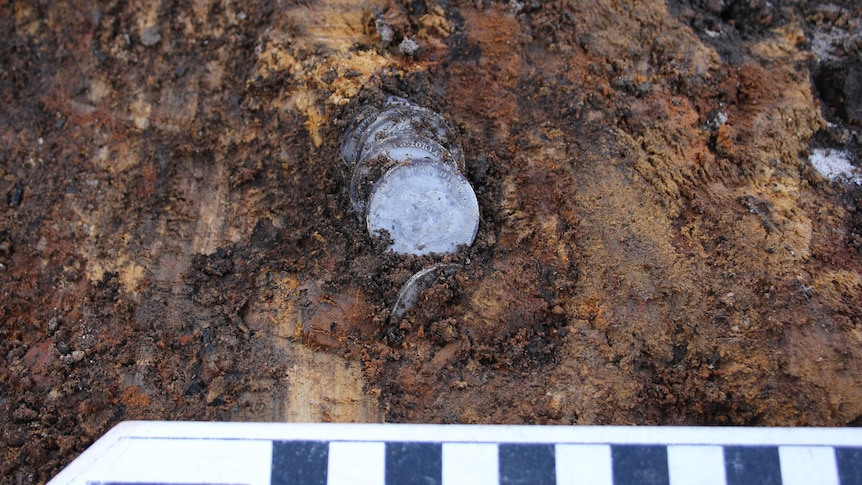Super článek.....jaký rozdíl mezi tehdejším vězeňstvím a dnešním lázeňským pobytem za mřížemi.
Unique silver coin depot found in world's toughest prison
Categories: Minting - Numismatics , Nálezy v Asii a Oceánii
Tasmania's Port Arthur Prison is notorious for its appalling conditions, strict rules and harsh sentences. Escape from the penal colony was virtually impossible. Convicts were not allowed to carry money. So how did a 180-year-old set of silver shillings end up on the floor of the prison workshop, and who buried it there?
They were coins from 1814 to 1844; they represented about a week's wages for a prison officer. But they represented a vast fortune for the prisoners. According to lead researcher Dr. Tuffin of the University of New England, the coins were probably stolen in the 1850s. in the 1950s: "We know that convicts occasionally had some change, but that much money at that time represented a significant amount ofst," added his colleague Sylvana Szydzik, the Port Arthur Historic Site Management Authority's historic preservation project manager.
The coins were discovered in the earthen floor of a workshop where copper processing would have taken place, as part of a ten-month archaeological investigation at the site of the foundry and forge. The find joins previous significant discoveries such as handmade gambling chips, tobacco pipes and skilfully made metalwork.
As a rule, prisoners did not possess money, and if any was found in their possession it was severely punished. Experts therefore believe that the coins were stolen by a prisoner from a guard and hidden in the foundry floor. "Someone with access to the workshop was able to get into a relatively hidden part and stored them in the dirt. Later he was unable to go back and retrieve them," Dr Tuffin said. "Maybe in the meantime he became suspicious, lost his benefits and was denied access to the workshop. Or he was sent to Hobart and subsequently released."
The workshops operated from the 1830s and were in use until 1877. They went through several phases, including the manufacture of shoes and also to cast copper and iron. "It was a hub of activity and researching them gives us the opportunity to share the information we found with our visitors," Ms Szydzik said. "The excavation was particularly difficult because the prison was damaged by fires in the 1890s. The new discoveries add additional layers of knowledge about the lives of the convicts."
About 10 percent of the convict population worked in the workshops at one point, and about 1,200 men at its peak. Given their access to sharp tools and fire, it was not a job for the colony's most guarded criminals. "There were more respectable people working in the shop and men who had some skills," Dr. Tuffin said. "Generally in such workshops you want men you can trust. Many of the convicts were skilled tradesmen before they were incarcerated, and it shows in the work they did. Some were incredibly skilled, casting the Port Arthur bells in the 1840s, a considerably complex process," he added.
Like a modern prison, Port Arthur had a black market: 'Back then it was tobacco and games,' Dr Tuffin said. "We know they even created their own currency. Among the forbidden items were handmade gambling chips. We found them in a previous excavation. The tokens formed a hierarchy among the convicts. If you have control over the chips, you have control over the game," explained the project leader.
Experts had previously assumed that convicts were not allowed to smoke tobacco at work. But remnants of tobacco pipes were found throughout the workshop. "The fact that we are finding fragments of them disproves this assumption. It's another interesting insight into everyday prison life," explained Dr Tuffin. He continued, "The excavation also found hundreds of kilograms of metalworking waste, which helped to identify where each craftsman had his workplace. We also found the complete anvil itself, which is quite an interesting discovery. When you find objects like this, you get a nice insight into the past."
This year's dig was the third and final phase of a series of excavations spanning nearly a decade. The purpose of the research was to follow the story of the convicts and to learn more about the hard prison work. The new information and items found will become part of a collection displayed to tourist visitors to the fort.
Roman Němec

The coins were hidden in the clay floor of the workshop.

Spikes and other metal material were also found

Prison excavations uncovered at the former foundry's revenge

The silver shillings represented the weekly wages of the prison guard - an officer

Excavations in the forge part of the workshop

Excavations in the prison

Also the whole anvil

Richard Tuffin and Sylvana Szydzik

Port Arthur penal colony in the 19th century.
Sources: archaeology.org, abc.net.au, awsforwp.com
The article is included in categories:



